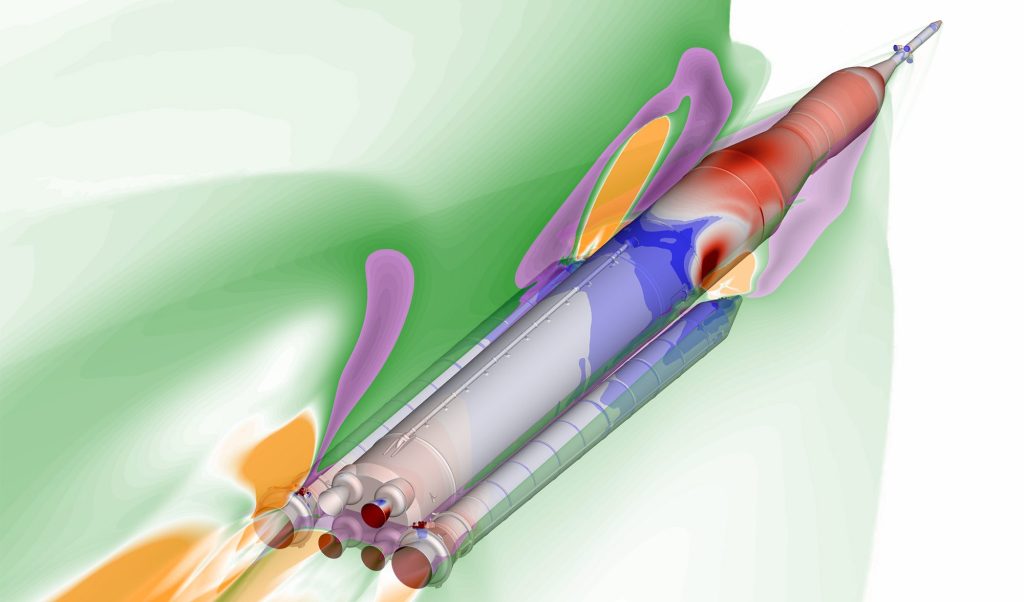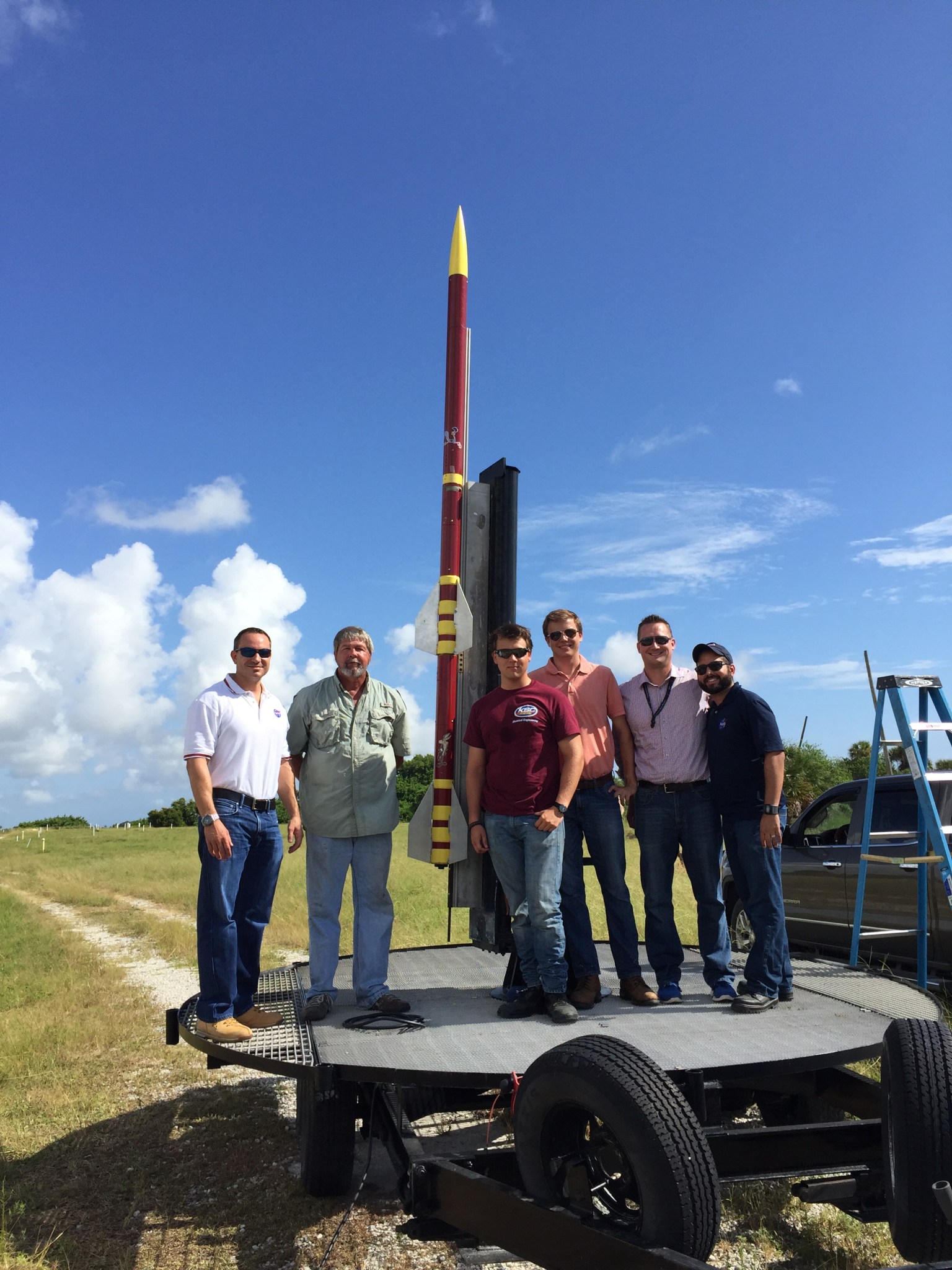A two-stage, solid-fueled rocket launched off its portable launch pad in Bunnell, Florida, recently, soared 10,000 feet and returned to Earth under parachutes to mark the conclusion of the Rocket University effort at NASA’s Kennedy Space Center.
The high-powered rocket launch was the final project of five that were executed by Kennedy engineers during the four-year span of Rocket University. Begun in 2012, Rocket University was formed as a way to give young engineers experience running large research and development programs by setting up small projects that could be accomplished relatively quickly while still going through the same steps they would for a much bigger program.
Before a launch could be made, the team had to develop a concept of operations and perform all the readiness reviews that precede the launch of a much larger rocket on a multi-million-dollar mission.
“The idea was to give young engineers hands-on experience with the process,” said George Mizell. “The process is the process, it’s what you’ve got to follow. So to make it stick, the idea was to have some sort of fun vehicle you could utilize to follow it through and execute the process.”
The process approach was quite familiar for Mizell, a veteran of nuclear submarine repair work for the Navy and later as a quality assurance specialist for space shuttle missions.
The rocket – unofficially dubbed “Wile E. Coyote” – measured almost 12 feet long and carried a small avionics package including a computer that recorded telemetry from numerous sensors and accelerometers. The software was unique, written by fellow engineer Kelvin Ruiz specifically for the needs of their rocket. The group, calling themselves Team ACME, also set the avionics package – Road Runner – to record video.
“His computer had to do flight ops, plus run the radio and other telemetry,” Mizell said.
Altogether, the fiberglass and fiber-wound rocket weighed about 40 pounds including Cessaroni L and K class motors that could take it up to nearly supersonic speeds.
The engineers built parts for the rocket themselves, sometimes using rapid prototyping techniques to make a component more suited to the needs of their specific rocket. The whole way through they stuck with full NASA processes, so they had to show that the design and manufacturing processes created parts that were tested and would work.
A couple of small parachutes allowed the rocket to be recovered after each flight, although early test flights at Kennedy saw the rocket land in the heavy brush and require dedicated recoveries.
That was not the case in Bunnell, where clear sod fields stretched out from the launch site. The NASA team joined in on a model rocketry club event. Whatever happened, there would be spectators and even an announcer to mark the countdown and ignition.
“There was probably just a sense of, yeah, we’re NASA, we should know what we’re doing,” Mizell said. “We don’t want the thing to shred when it lifts off.”
The rocket did not shred on its most ambitious launch, but the L motor did take a few extra seconds to light. “Sweat time,” Mizell called it. The rocket was recovered safely about 900 yards from where it lifted off and brought back to the space center. Rocket University thought about scaling it up to make a new rocket capable of reaching 250,000 feet, but that effort was deemed too close to the work that engineers at Wallops Flight Facility do with their sounding rockets.
For now, Rocket University’s purpose of giving engineers a chance to work through a NASA process has been achieved and Kennedy Space Center is on the verge of a new dawn in spaceflight. NASA’s Commercial Crew Program and Ground Systems Development and Operations Program are steadily progressing toward flight tests that will kick off ambitious exploration in low-Earth orbit and deep space.
“This is the real deal now,” Mizell said.


























